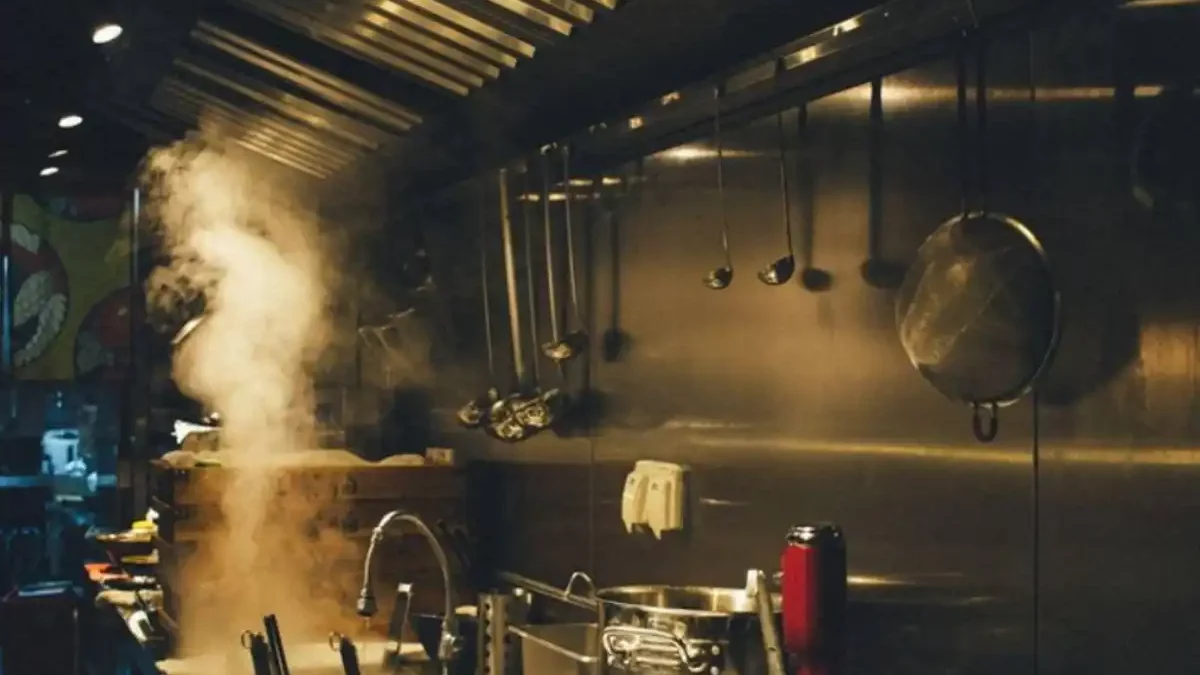Having a restaurant kitchen that runs smoothly and efficiently is critical to your business. You don’t want to be wasting any time or money on repairs or issues with your equipment, but there are some common mistakes that owners make when designing their kitchens. Here are some of them:
Table of Contents
1. Don’t clean the kitchen exhaust filter
It’s easy to forget about the kitchen exhaust filter cleaning when you’re busy, but don’t forget to clean it regularly. The filter needs to be cleaned at least monthly and more frequently if your kitchen is very busy. If a filter gets dirty, airflow will be restricted and the hood can become too hot for safe operation. Dirty filters also contribute to odor problems in restaurants with exposed kitchen appliances such as stoves or fryers because they collect grease and smoke particles that are released into the air when cooking occurs on them (exhaust fans aren’t designed with filters in mind).
Here’s what you need to know about cleaning your restaurant’s hood:
- Use an approved cleaning solution (such as those sold by manufacturers specifically for this purpose) according to package directions
- Close all doors before starting so no one accidentally opens one while you’re working on it
2. Ignore kitchen maintenance
When it comes to commercial kitchen maintenance, you should follow a routine that includes:
- Checking for equipment malfunctions and repairing them as soon as possible. This can save you hundreds of dollars per year in repair bills and even more in labor costs.
- Cleaning the kitchen after every shift so that your staff can work efficiently without having to deal with stains or other problems from previous shifts.
- Keeping an eye on the quality of food being served by checking temperatures regularly, monitoring expiration dates, and looking at how the staff handles food while preparing it.
- Regularly inspecting refrigerators and freezers as well as any other storage areas where food is kept before use (e.g., walk-in coolers).
3. Not using display fridges
Display fridges are a great way to showcase your food and attract the attention of your customers. They also help increase sales, as they allow you to maintain quality while keeping the food fresh.
Display fridges are also known as merchandising appliances, which are used by restaurants to display their foods and drinks on a countertop display unit. This allows customers to view what’s available at all times so that they don’t have to wait for their meals or drinks before deciding what they want. It also makes it easy for them when ordering takeaways or deliveries because everything is visible!
4. Not storing food properly
When storing food, you should keep it at the right temperature, humidity, light, and airflow. If any of these conditions are not ideal for your food then it can go bad quickly.
- Temperature: Food must be stored at the optimal temperature for that type of food to ensure that it does not spoil or become unsafe to eat. This means that raw meats need to be kept cold (below 4 degrees Celsius) while cooked meats can be stored at room temperature.
- Humidity: The humidity level in your commercial kitchen should be between 30-40 percent as this will prevent mold from growing on foods such as cheese and pieces of bread that tend to attract moisture from the air around them.
- Light: Foods exposed to sunlight will lose their nutrients over time so make sure products like fruits and vegetables are kept away from windows where they will get direct sunlight exposure during daytime hours; instead place them on shelves away from any windows where there isn’t direct sunlight coming through them during daylight hours.
5. Ignoring lighting, ventilation, and safety
Lighting, ventilation, and safety are three vital factors in a restaurant kitchen. Ventilation is important for hygiene because it helps keep the air circulating and prevents stagnant smells from being trapped inside the kitchen. Without adequate ventilation, bacteria tend to accumulate on surfaces such as the walls, floors, and ceilings of your restaurant’s kitchen. In addition to creating an unsanitary working environment for your staff members, this can also lead to food poisoning if customers consume contaminated food products prepared in a poorly ventilated space.
Lighting plays a critical role in helping keep both customers and employees safe during their time at your establishment as well. Customers need bright lighting so that they can see what items are available for purchase or consumption; however, if there isn’t enough light then visibility could be limited which may result in accidents involving either patrons or employees alike (e.g., someone tripping over something left on the floor while walking around).
For instance: The lack of proper lighting could cause someone who cannot see well enough due to poor eyesight – such as an elderly person like grandma – might accidentally walk into something sharp like knives lying around because she wasn’t able to see enough beforehand.”
6. Not changing the filter of ventilation regularly
Change your filters every six months. This will help keep the air circulating inside your kitchen clean and prevent any buildup of dust or dirt from affecting your health. Keeping the air in your kitchen clean is also important for maintaining the quality of food that you cook in this space.
Conclusion
In conclusion, we hope this article has helped you to avoid these common restaurant kitchen design mistakes. A well-designed restaurant kitchen can be the difference between great food and poor service. We would like to wish you luck in designing and maintaining your new restaurant kitchen!

